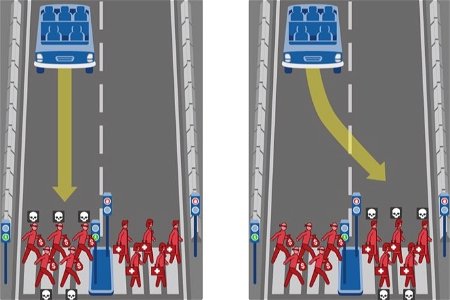Is Autonomous Driving the Future?
With the release of the Kia EV9 on the horizon, the first car to hit UK markets that will feature driverless technology, autonomous driving is once again in the spotlight.
Self-driving vehicles will have major implications across the very principles of everyday life. From preventing a good amount of car accidents that kill over a million people a year to affecting the energy and retail sectors plus dozens more areas.
Though it's not a new topic, autonomous technology brings up many debates and questions about safety and morality. These conversations were predominantly sparked due to the release of the Tesla Model S. This was Tesla's first semi-autonomous vehicle that used cameras, sensors and radar to detect other vehicles and automatically use the car's host of driver assist technology to navigate.
Autonomous vehicles are already in development across varying sectors. Companies like Zoox are developing driver-free taxis so commuters can work or relax without having to focus on the journey. Even more recently, Wayve, an autonomous tech company developed new AI systems that 'will do for autonomous vehicles what the Windows Operating System did for personal computers by removing the need for tailor-made software.
The Levels of Autonomy
There is a difference between self-driving and autonomous vehicles. Autonomy is measured in five levels. Self-driving is reached at level three whereas autonomous is achieved at level four and above. The main difference between the two is that self-driving still requires a driver to be ready to take back control at any time whereas autonomous is a fully automated vehicle that fully functions without a human driver.

Why We Don't Have Autonomous Vehicles Yet
Safety
The hardest part about making a self-driving or autonomous vehicle isn't making them safe in the first place but rather proving that they are safe. With this technology still being completely new, it is very difficult to prove that it's safe to use, especially when being developed on such a large scale.
Despite the massive development and growth within autonomous driving. There are still many difficulties to overcome. Computer technology, though reliable when working correctly runs the risk of 'glitching' or malfunctioning altogether.
Recently, driverless taxis across San Francisco, America reported unknown errors that caused cars to stall at random times during journeys. This poses a risk not only to passengers in the vehicle but to other vehicles and pedestrians.
To combat this, rather than being tested individually, technology is now being tested as 'one functioning system' to try and ensure that systems continue to run despite glitches or issues within one area of software.
This doesn't even include the depths needed to consider when it comes to developing and protecting the vehicle from cybersecurity threats.
Morality
Depending on how much of a deep dive you want to take, a big hurdle for autonomous driving is that of human morality. The human brain doesn't work fast enough to always consider the 'better' option during an accident but computer technology that is programmed by humans can calculate an outcome and decide in a split second.
In 2016, Jean-François Bonnefon and a team at MIT created a 'life and death' simulation quiz that tested and tracked the moral choices of humans. It compared two unavoidable scenarios in which an autonomous car had to crash and asked the user to choose which scenario they would have the car choose. For example, should the car crash into four elderly men or two school children?


This only becomes more difficult due to an unlimited number of possibilities that would need to be accounted for, researched, tested and coded in complex and unpredictable human environments.
Drivers
A final big factor is drivers in general, both within the vehicle and other vehicles on the road. There have been many reports of self-driving vehicles being involved in accidents. Many have been put down to the driver over-estimating the capabilities of the software.
Even if the vehicle is fully autonomous and passes all safety checks, this doesn't protect the car from erratic and dangerous drivers around it and with new dangers and situations almost daily, it's hard to guarantee fully autonomous safety.
The Benefits of Automated Cars
It's not all hurdles and marathons regarding self-driving and autonomous vehicles. Though they aren't fully developed yet, there are expected to be noteworthy benefits of choosing a self-driving or autonomous vehicle.
Reaction Time and Accident Prevention
As mentioned previously, the computers in autonomous cars will be able to calculate the best outcome for a multitude of scenarios almost instantly which will minimise or completely remove human error. Up-to-date programming could prevent an accident from occurring before the human brain has even acknowledged the potential of an accident.
Enhanced Accessibility
Driverless vehicles and autonomous vehicles will open the doors to safe and accessible driving for those who don't drive and those that are unable to. It will also open up space to enhance and personalise the travel experience through entertainment, comfort and space.
Shared and Communal Ownership
At present, a car is only valuable when it is being driven. A driverless or autonomous car can be used without the need for a driver, opening up the possibility of shared ownership or 'communal' cars. This can save money as costs can be split between multiple owners and could minimise the number of cars on the road without hinderng convenience and make driving far more sustainable
To conclude, though fully autonomous cars still need a lot of development, they have vast potential to develop new cybersecurity and increase the accessibility and safety of everyday travel.
It isn't just limited to cars and taxis. Many companies are working to develop similar technology as a way to enhance the public transport system and logistical transportation.
